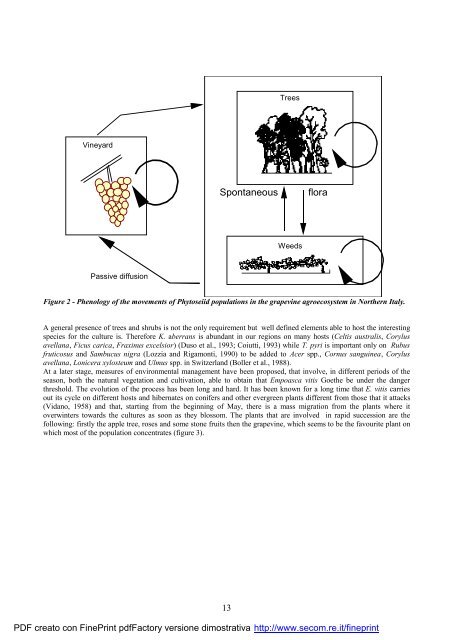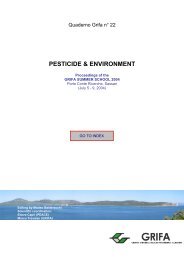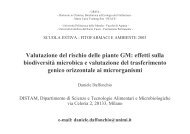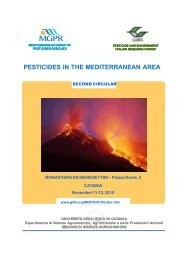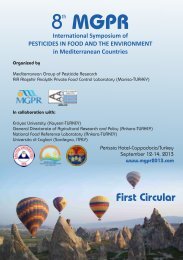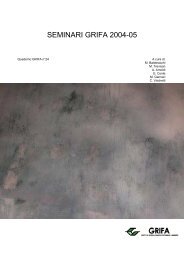International Congress BIOLOGICAL PRODUCTS - Gruppo di ...
International Congress BIOLOGICAL PRODUCTS - Gruppo di ...
International Congress BIOLOGICAL PRODUCTS - Gruppo di ...
You also want an ePaper? Increase the reach of your titles
YUMPU automatically turns print PDFs into web optimized ePapers that Google loves.
Vineyard<br />
Passive <strong>di</strong>ffusion<br />
Spontaneous flora<br />
Figure 2 - Phenology of the movements of Phytoseiid populations in the grapevine agroecosystem in Northern Italy.<br />
A general presence of trees and shrubs is not the only requirement but well defined elements able to host the interesting<br />
species for the culture is. Therefore K. aberrans is abundant in our regions on many hosts (Celtis australis, Corylus<br />
avellana, Ficus carica, Fraxinus excelsior) (Duso et al., 1993; Coiutti, 1993) while T. pyri is important only on Rubus<br />
fruticosus and Sambucus nigra (Lozzia and Rigamonti, 1990) to be added to Acer spp., Cornus sanguinea, Corylus<br />
avellana, Lonicera xylosteum and Ulmus spp. in Switzerland (Boller et al., 1988).<br />
At a later stage, measures of environmental management have been proposed, that involve, in <strong>di</strong>fferent periods of the<br />
season, both the natural vegetation and cultivation, able to obtain that Empoasca vitis Goethe be under the danger<br />
threshold. The evolution of the process has been long and hard. It has been known for a long time that E. vitis carries<br />
out its cycle on <strong>di</strong>fferent hosts and hibernates on conifers and other evergreen plants <strong>di</strong>fferent from those that it attacks<br />
(Vidano, 1958) and that, starting from the beginning of May, there is a mass migration from the plants where it<br />
overwinters towards the cultures as soon as they blossom. The plants that are involved in rapid succession are the<br />
following: firstly the apple tree, roses and some stone fruits then the grapevine, which seems to be the favourite plant on<br />
which most of the population concentrates (figure 3).<br />
13<br />
Trees<br />
Weeds<br />
PDF creato con FinePrint pdfFactory versione <strong>di</strong>mostrativa http://www.secom.re.it/fineprint


